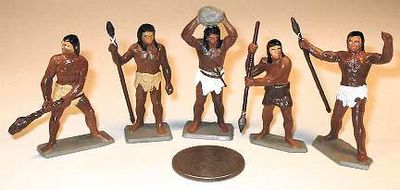The fossil teeth and jawbones of two new species of tiny monkey-like creatures that lived 37 million years ago have been sifted from ancient sediments in the Egyptian desert, researchers have reported.They said their findings firmly establish that the common ancestor of living anthropoids -- including monkeys, apes and humans -- arose in Africa and that the group had already begun branching into many species by that time. Also, they said, one of the creatures appears to have been nocturnal, the first example of a nocturnal early anthropoid.
Erik Seiffert and his co-authors published their discovery of the two new species -- named Biretia fayumensis and Biretia megalopsis -- in an article in the October 14, 2005, issue of the journal Science.

The researchers discovered the fossils over the course of the last few years at a site called Birket Qarun Locality 2 (BQ-2) about 60 miles southwest of Cairo in the Fayum desert. BQ-2 has only been systematically excavated for about four years, said Seiffert, in contrast to a much younger Fayum site, called L-41, which has been explored for the last 22 years by Simons and his colleagues.
The latest fossils of the new species consist of tiny teeth and jaws, whose shapes yield critical clues about the species whose mouths they once occupied. For example, a tooth root from the species Biretia megalopsis is truncated, indicating that it had to make room for the larger eyesocket of a nocturnal animal.
"These finds seem to indicate that Biretia megalopsis must have had very large eyes, and so was likely nocturnal," said Seiffert. "This has never been documented in an early anthropoid. The simplest explanation is that Biretia's nocturnality represents an evolutionary reversal from a diurnal ancestor, but that conclusion is based solely on the probable pattern of relationships. If down the road we find out that our phylogeny was wrong, Biretia could end up being very significant for our understanding of the origin of anthropoid activity patterns."
Read the rest HERE. Image from HERE.